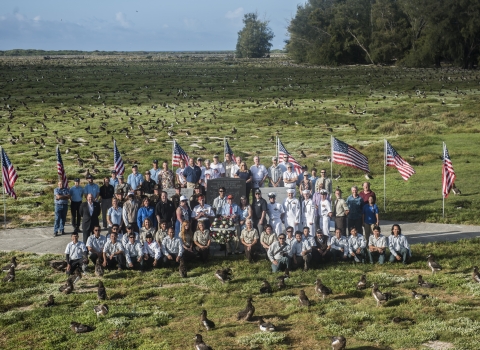Thanks to $1.3 million in Great Lakes Restoration Initiative funding, we at the U.S. Fish and Wildlife Service will move forward several fisheries projects, including work at several of our agency’s stations from both the western and eastern Great Lakes.
Three projects will be supported in 2024, which will aid in restoration of sustainable populations of coregonines in Lake Ontario to reestablish their historical roles as forage for predators.
Researching coregonines
A first project at the Alpena Fish and Wildlife Conservation Officein Michigan will support researching coregonine populations, including fish like cisco and bloaters. Research will include a focus on Lake Huron and will continue to collect baseline information on lake herring communities, including the assessment of the post-stocking survival, growth and maturity of these cultured cisco. This will allow staff to assess reproduction.
Studying lake herring
A second project, led by the Green Bay Fish and Wildlife Conservation Office, in Wisconsin, will study wild lake herring for Saginaw Bay Restoration. The conservation office will also evaluate a proof-of-concept process for collecting wild juvenile fish for development into future broodstock broodstock
The reproductively mature adults in a population that breed (or spawn) and produce more individuals (offspring or progeny).
Learn more about broodstock . Currently, staff face hazards when accessing offshore winter spawning locations for fish collections and other serious logistical challenges, including achieving high capture efficiencies and personnel safety. The work will test a fundamentally different approach of capturing juvenile fish to determine rates of survival during capture of the fish, subsequent isolation through the rearing process, and whether this new method is feasible.
Partnering to benefit regional fisheries
For a third project, Great Lakes Restoration Initiative funding will also be used by the Allegheny National Fish Hatchery, and the Northeast Fishery Center, both in Pennsylvania, in partnership with the U.S. Geological Survey Tunison Lab, in New York, the New York Department of Environmental Conservation and the Ontario Ministry of Natural Resources.
In addition to the projects described above, work will include developing a better understanding of how these fish play a role in the food web. Planned work will also improve health and quality of juvenile bloater, fish health monitoring, assessment and monitoring of wild populations and hatchery production, spawning habitat evaluations, population viability analysis, and development of technical capabilities. This also includes evaluation and analysis of using eDNA to monitor populations and help focus traditional fisheries survey efforts. Lastly, work will also include infrastructure enhancements to increase production of coregonines.
“The Great Lakes Restoration Initiative has been very instrumental in supplementing our ability to support reintroductions of native prey species to the Great Lakes. We could not do this amount of work without it,” Midwest Region Hatchery Program Supervisor Kurt Schilling said.




